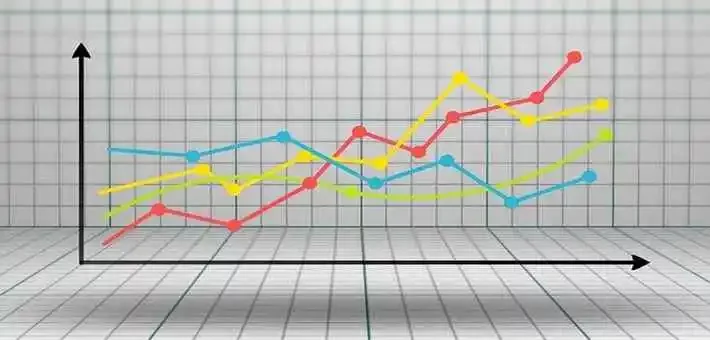More MCQs
HOME
Categories
Courses
Business Management MCQs
Fundamentals of Economics MCQs
Demand and Supply Elasticities MCQs
Utility Analysis Economics MCQs
Costs Revenues and Firms economics MCQs
Consumption Savings and Investment MCQs
Multiplier and Accelerator Economics
Economic Growth and Taxation MCQs
Economics Monetary Policy MCQs
Financial Markets MCQs
Financial markets exist to bring together lenders (investors) with borrowers (governments and companies). Here on MCQs.club we have designed Multiple Choice Questions (MCQs) on Financial markets, these fully cover Derivative finance MCQs, financial markets and institutions, types and examples of financial market, derivative finance example and types, this economist guide to financial markets is useful for competitive exams, Business management and Professional accountancy exams.
- Financial markets exist to bring together lenders (investors) with borrowers (governments and companies).
- True
- False
- Short-term credit –
- A financial instrument that has a maturity date of, usually, less than 3 months.
- These are issued by companies or governments who need to increase their liquidity in the short term.
- Buyers of Short-term credit are investors looking to make a return on their money.
- All of the above
- Money market –
- The financial market which is used to raise short-term credit.
- The money market is a subsection of the wider fixed income market.
- It is used by large institutions to finance short term cash needs.
- All of the above
- Examples of Money market are:
- Governments
- Mutual funds
- Organisations with high financial backing.
- All of the above
- Instruments of the money market include:
- Treasury Bill (or T-bill)
- Certificate of Deposits (CDs)
- Commercial Paper
- All of the above
- Capital markets –
- The financial market which is largely used to raise long-term finance and capital.
- The capital markets are some of the most closely tracked financial indicators in the economy.
- Both A&B
- None
- The main types of organisation that operate in the Capital markets include:
- Corporations
- Commercial banks
- Stock exchanges
- Non-bank institutions
- All of the above
- Instruments of the capital market are categorized into:
- Debt (sovereign bonds, municipal bonds, debentures, corporate bonds)
- Equity (common stock, preference shares, or derivatives)
- Both A&B
- None
- Types of shares include:
- Common stock
- Preference shares
- Both A&B
- None
- Common stock (ordinary share) –
- An instrument issued by companies that can be obtained via the primary or secondary market.
- The equity holder may or may not be paid dividend, depending on the company’s policy.
- Holders of the instrument rank at the bottom of the scale if the company were to go into liquidation.
- All of the above
- Preference shares –
- An instrument issued by companies that rank higher than common stock in terms of scale of preference.
- Its value is based upon the share price fluctuating.
- Dividends are fixed, and the holder does not hold any voting rights.
- All of the above
- Mutual funds –
- This is an investment vehicle where many investors pool their resources together to be invested in a variety of financial instruments.
- They are operated by professional money managers who have specialist knowledge of the money, and capital markets.
- A mutual fund portfolio can be constructed to be diversified, and across a range of securities.
- All of the above
- Derivatives –
- An instrument whose price is dependent on one or more underlying asset(s).
- It is merely a contract between two parties.
- Changes in the underlying asset(s) can cause great fluctuations in the price of the derivative.
- All of the above
- Derivatives can be traded as:
- Over the counter (OTC)
- On an exchange (ETDs)
- Both A&B
- None
- Over the counter (OTC) derivatives –
- The issue and trade of each instrument is on an individual basis.
- The level of risk is much higher as counter parties can be affected if the trade loses a lot of money.
- Both A&B
- None
- Exchange traded derivatives (ETDs) –
- A derivative must meet certain strict criteria to be traded on an exchange.
- ETDs reduce the risk involved with a transaction by ensuring that whenever a party goes “long” there is another party that is “short”.
- Trades are done through a clearing house.
- All of the above
- Which of the following instruments are NOT traded in the capital market?
- Corporate bonds
- Treasury bills
- Mortgages
- Shares
- Other things being equal, all of the following would lead to a rise in share prices EXCEPT which ONE?
- A rise in interest rates
- A reduction in corporation tax
- A rise in company profits
- A decline in the number of new share issues
- Which of the following does not engage in the buying and selling of shares in other companies?
- Investment trusts
- Stock exchanges
- Insurance companies
- Pension funds
- An investor who buys a call option is:
- buying the right to buy shares at a particular price
- buying the right to sell shares at a particular price
- selling the right to buy shares at a particular price
- selling the right to sell shares at a particular price
- Which of the following occurs within a traditional money market?
- the issue of sterling certificates of deposit
- interbank lending in the sterling inter-bank market
- discount houses buying short term government debt in the discount market
- local authority borrowing in the euro-currency market
—More to come soon—




